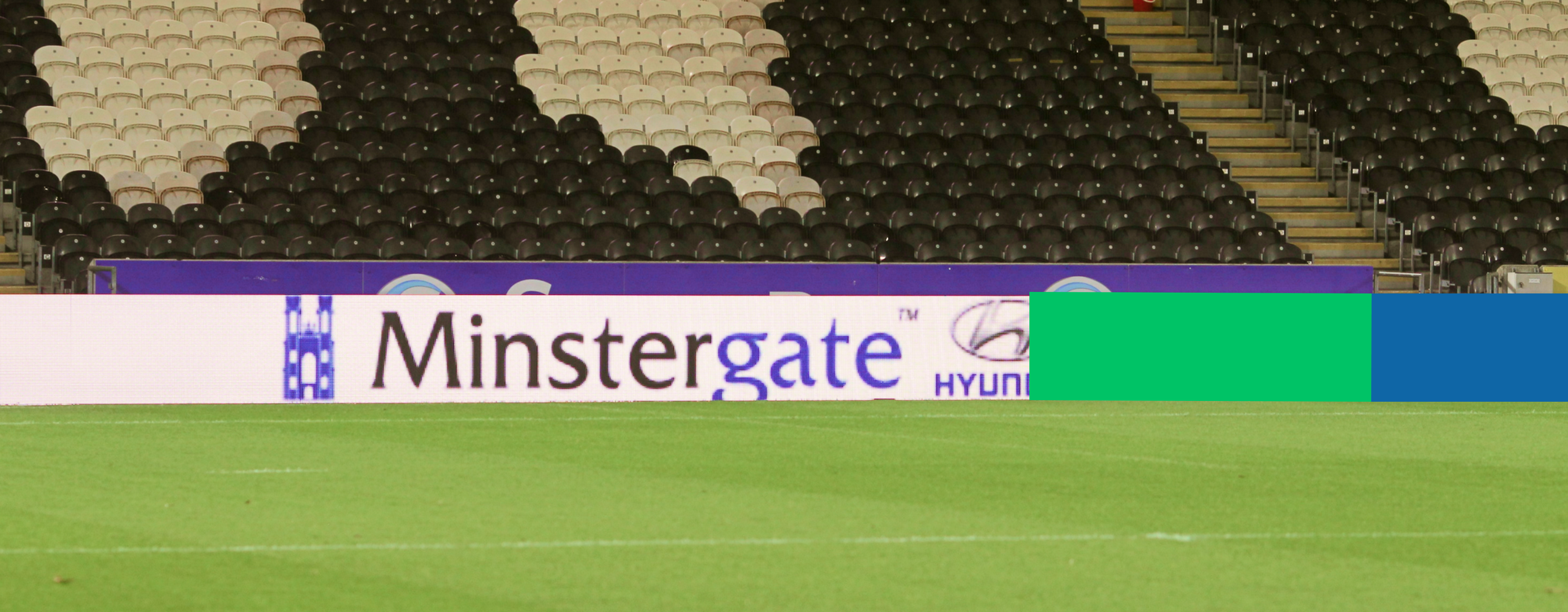|
Getting your Trinity Audio player ready...
|
AI is widely integrated across multiple advertising channels, and still, it gets mostly unnoticed. Due to less awareness among marketers about the technologies that can potentially scale automation and personalization in the advertising niche. In the past decade, virtual advertising has seen measurable growth. As virtual advertising allows brands to tailor advertising mediums to reach their targeted audience in any region around the globe with minimalistic efforts. The advertisements we have seen on perimeter billboards around the pitch during a sports match are suitable examples of virtual advertising.
With AI-powered virtual advertising in place, brands can speak to their target market in their native language and align messages with a regional brand strategy for effective advertising outcomes.
Perimeter billboard virtual advertising allows sports organizers to reach distinct corners of the world at the same time with no difference from what fans see on the pitch. This virtual advertising technology is called virtual replacement perimeter or virtual perimeter replacement. AI helps advertisers to insert digital images specific to their region live along the pitch side without disturbing the rest of the scenery or telecast. For instance, while users are watching the Olympics from different locations, either Australia, the US, the UK, or India, leveraging augmented reality technology to build ‘virtual hybrid’ LED perimeter boards to telecast sponsor advertisements specific to the region in their native language for effective reach. This practice potentially boosts collective advertising revenue.
Virtual Advertising Technology For Perimeter Billboards -Introduction
Historically perimeter billboards are limited to an advertiser for each board. And been restricted to advertising flexibilities for a long time now. The introduction of LED perimeter systems opened wide opportunities for advertisers to share eye-catching messages with their audience to effectively communicate their brand. Real Madrid is the first soccer club to pioneer LED perimeter advertising, and then it was followed by the Spanish giants from 1994 to 95. After the 2000s, the stock city took the LED perimeter advertising to the next level, by featuring it in two rows around the pitch. With time, sports clubs and organizing firms across the globe started employing this technology to meet opportunities with advertising and changing fans’ consumption needs.
How does Virtual Advertising technology work?
The sophistication seen in today’s broadcasting industry is achieved after a mountainous attempt to advance virtual perimeter advertising technology. The key factor to achieve this sophistication is the usage of chroma key technology with magenta. Modern perimeter advertising works with electronically controlled LED panels that present a sequence of individual images, each displayed for 20 milliseconds. Augmented and virtual reality makes it simple. While telecasting, the camera does not see the real advertising but is focused to show the band with chroma key magenta on a blue or green colored screen.

Every advertisement on the billboard lasts for 18 milliseconds, hence leaving 2 milliseconds of the blank screen that seamlessly blends into the TV picture. Helping organizers to showcase real perimeter ads to viewers in the stadium, and at the same time showing different ads to people in front of their TV sets.

AI-powered software continuously recalculates the angle of the perimeter to recognize and capture the magenta bands in the TV picture for various resolution formats to play the advertising content.
The role of AI in virtual perimeter advertising
Today’s technological advancements in advertising like automation, personalization, segmentation, and other functions are impossible to think about without AI. with continuous research and development, AI holds the biggest potential for digital ad tech. And with an increasing market percentile of brands investing in AI-powered digital advertising solutions, the growth of integration of AI for virtual marketing is increasing at a pace. And here are a few facts to consider and understand why marketers need to invest in this new technology now.
- AI eliminates the high operating costs associated with perimeter advertising.
- AI is enabling bid optimization, targeting, audience segmentation, and extension at scale in advertising.
- Automation and personalization have become more sophisticated than ever before.
- AI in programmatic advertising and targeted marketing has become faster, cheaper, and more efficient.
- Smart playlists, content recommendations, and visual enhancements are already part of the AI era.
- Cognitive analytics helps brands to reach the target audiences in specific regions during the most engaging time and with specific context for effective results.
The above-mentioned are a few greatest abilities of AI in the ad tech stack. Increasing conversions, finding the best channels of customer communication, enabling advertising personalization, predictive bidding, product recommendations, and creative optimization are the most considerable factors for businesses to choose AI for obtaining new customers with ease. Along with pros, every technology brings in some ‘cons’ such as AI. The lack of expertise, and higher adoption costs are two main drawbacks.
Today’s advertising industry is highly reliant on data. Whether it’s commercial marketing or virtual advertising. Harnessing the true power of AI and big data can automate data processes and potentially reduce advertising budgets. Using AI in perimeter billboard advertising simplified routine tasks and helped in providing reliable marketing advantages.
Soulpage being an industry expert in advising and helping marketing firms and sports organizations with digital transformative technologies like AI, can scale the opportunities with real-time virtual targeted advertising. To know more about this technology or for identifying a definitive AI solution for your business contact us.
